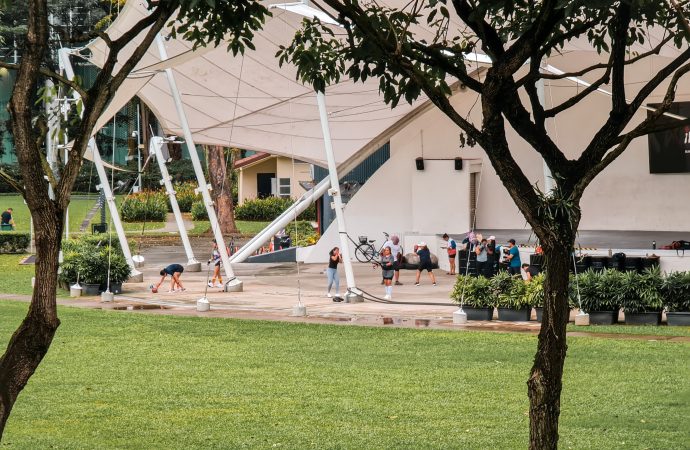Introduction: As we age, it becomes increasingly important to prioritize fitness and exercise to maintain a healthy and active lifestyle. However, traditional high-impact workouts may not be suitable for everyone, especially elderly individuals who may have joint issues or reduced mobility. This is where low-impact workouts come into play. In this article, we will
Introduction:
As we age, it becomes increasingly important to prioritize fitness and exercise to maintain a healthy and active lifestyle. However, traditional high-impact workouts may not be suitable for everyone, especially elderly individuals who may have joint issues or reduced mobility. This is where low-impact workouts come into play. In this article, we will explore the benefits of low-impact workouts for elderly people and how they can contribute to overall well-being.
Breaking News: The Rise of Low-Impact Workouts
In recent years, there has been a significant rise in the popularity of low-impact workouts among the elderly population. These exercise regimens focus on gentle movements that are easy on the joints, while still providing numerous health benefits. With the aging population looking for ways to stay active and maintain mobility, low-impact workouts have emerged as a safe and effective option.
Feature Story: The Benefits of Low-Impact Workouts for Elderly People
1. Joint-Friendly: Low-impact workouts minimize stress on the joints, making them ideal for individuals with arthritis or other joint-related conditions. Exercises such as walking, swimming, and cycling are gentle on the joints while still providing cardiovascular benefits.
2. Improved Cardiovascular Health: Low-impact aerobic exercises help improve heart health without placing excessive strain on the body. These activities increase heart rate, promote better blood circulation, and contribute to better overall cardiovascular fitness.
3. Enhanced Balance and Stability: Many low-impact workouts incorporate balance exercises, which are crucial for preventing falls and maintaining stability. Activities like tai chi and yoga help improve balance, coordination, and flexibility, reducing the risk of injuries.
4. Muscle Strength and Endurance: Low-impact strength training exercises, such as using resistance bands or light weights, can help maintain and improve muscle strength. This is vital for supporting daily activities, preventing muscle loss, and promoting functional independence.
5. Mental Well-being: Engaging in regular low-impact workouts has been linked to improved mental health and well-being. Exercise releases endorphins, reducing stress, anxiety, and depression. It also provides an opportunity for social interaction, boosting mood and overall quality of life.
Opinion Piece: Embracing Low-Impact Workouts for Elderly Fitness
As society continues to age, it is crucial to prioritize the fitness needs of the elderly population. Low-impact workouts offer a valuable solution, allowing individuals to stay active and reap the benefits of exercise without putting unnecessary strain on their bodies. These workouts promote longevity, independence, and a higher quality of life, while also reducing the risk of injuries. It is time to embrace low-impact workouts as an integral part of elderly fitness and encourage seniors to engage in activities that suit their individual needs and abilities.
Research Techniques: Verifying Information and Uncovering Sources
To ensure accurate reporting on the benefits of low-impact workouts for elderly people, it is important to employ research techniques to verify information and uncover reliable sources. Here are strategies to ensure accuracy:
1. Consult Experts: Seek insights from geriatric specialists, fitness trainers specializing in elderly populations, and healthcare professionals. Their expertise can provide valuable information and ensure the exercises recommended are safe and effective.
2. Review Scientific Studies: Stay up to date with the latest research studies on low-impact workouts for the elderly. Analyze the methodology, sample size, and results to present evidence-based information to readers.
3. Interview Seniors: Speak with elderly individuals who engage in low-impact workouts and inquire about their personal experiences, benefits they’ve noticed, and any challenges they’ve faced. These interviews can provide real-life perspectives and inspire readers.
Ad
hering to Journalistic Ethics
In reporting on low-impact workouts for elderly people, it is crucial to adhere to journalistic ethics to maintain credibility and integrity. This includes providing accurate information, citing sources, fact-checking, and avoiding personal biases. It is our responsibility as journalists to deliver reliable and trustworthy content that empowers readers to make informed decisions about their health and fitness.
Conclusion:
Low-impact workouts have become increasingly popular among elderly individuals, offering numerous benefits for their physical and mental well-being. From joint-friendly exercises to improved cardiovascular health, enhanced balance and stability, and increased muscle strength, these workouts provide a gentle yet effective way for seniors to stay active. By adhering to journalistic ethics, conducting thorough research, and delivering accurate reporting, we can inspire readers to explore and embrace low-impact workouts as a vital part of their fitness journey. Remember to consult with a healthcare professional or fitness expert before starting any new exercise program to ensure it suits individual needs and abilities.























Leave a Comment
Your email address will not be published. Required fields are marked with *